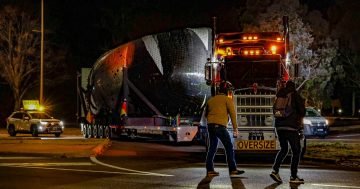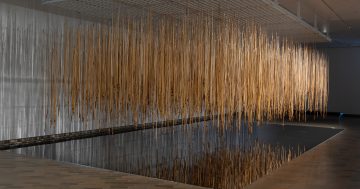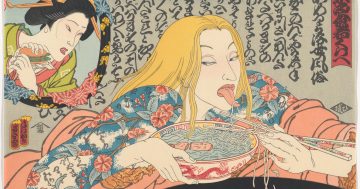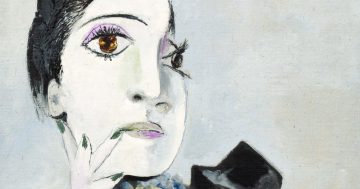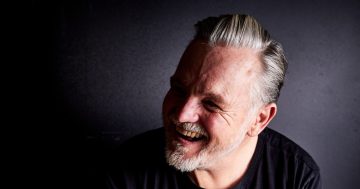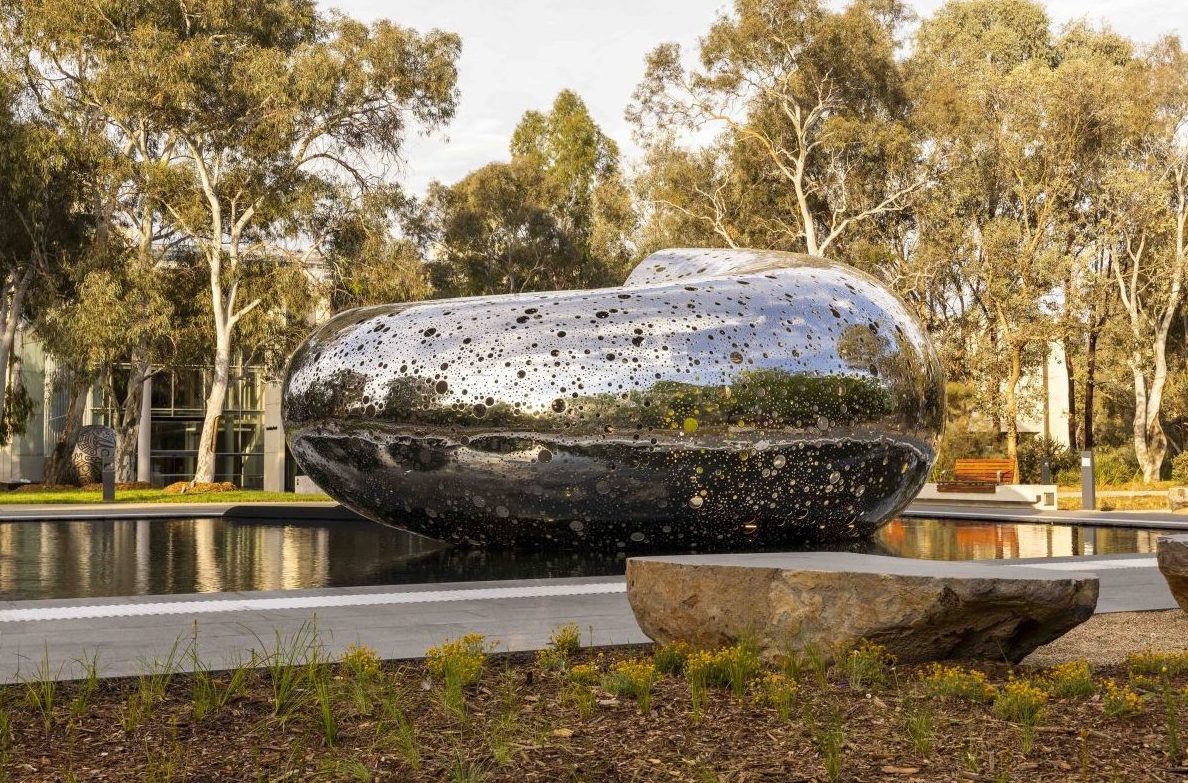
Lindy Lee, Ouroboros, 2021-24 installation view, National Gallery of Australia, Kamberri/Canberra, 2024, commissioned for the National Gallery’s 40th anniversary, 2022, photo by Martin Ollman © Lindy Lee. Photo: NGA.
Everything about this work is unprecedented. Lindy Lee’s Ouroboros is the most expensive commission by the National Gallery of Australia (NGA) in its history. For Lindy Lee, a 70-year-old Brisbane artist, it is the largest and most ambitious commission of her career.
The scale – nine metres long, seven metres wide and more than four-and-a-half metres high – makes this a huge immersive sculpture that literally swallows up the viewer allowing them to be lost within the entrails of the beast. Physically, it is made up of recycled scrap metal that has been brought to a mirror-like stainless steel finish – with about two kilometres of welding – and perforated with 45,000 hand-cut holes.
A key concept for the work is that it absorbs, radiates and pulsates with light and spiritual energy. During the day, the sculpture is lit from outside from its numerous perforations, in a sense absorbing the sun’s energy. At night, it is lit internally, returning light to the surrounding world.
As viewers, we’re invited to enter the work and participate in a meditative experience so we can emerge from it spiritually enriched. Inside, there are no interior barriers – simply a huge luminous cavern into which we can melt. The sculpture is positioned within a rectangular moat.
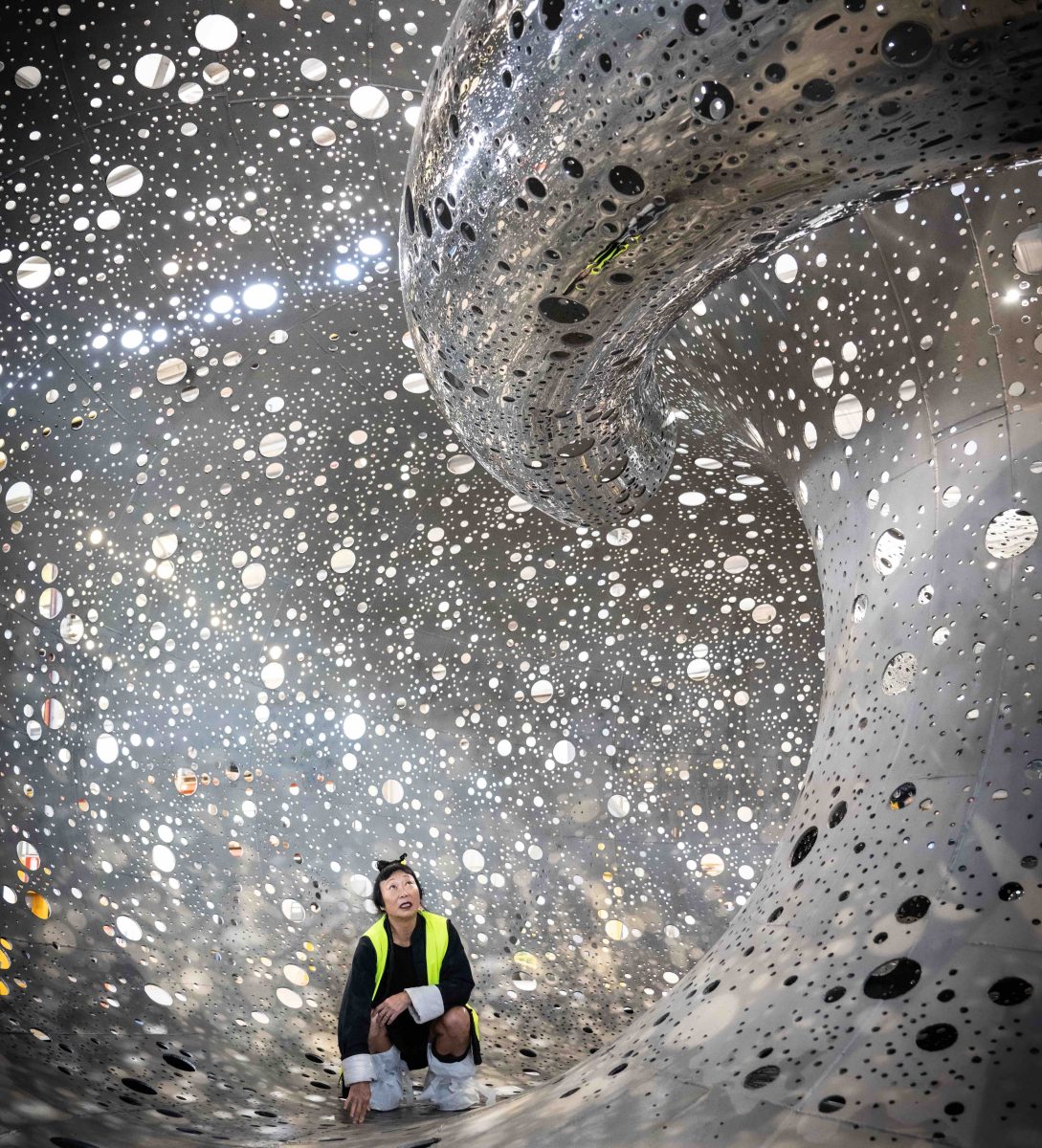
Lindy Lee, Ouroboros, 2021-24 installation view, National Gallery of Australia, Kamberri/Canberra, 2024, commissioned for the National Gallery’s 40th anniversary, 2022, photo by Karleen Minney, © Lindy Lee. Photo: NGA.
I’m a great admirer of Lindy Lee’s work and the particular brand of meditative magic that it evokes. Entering this work is like entering a spiritual shower – you emerge refreshed and a little calmer than when you entered. It is art that bypasses the rational intellect, there is nothing here to ‘get’ or ‘decode’ – no riddle to solve. You are invited to surrender to it and let it work its magic.
Like with much contemporary art, this will not appeal to everyone. But I suspect it will appeal to enough people to make it into a destination piece that will attract visitors to the National Gallery, like a beacon standing at its entrance.
I strongly urge you to come and experience it, rather than make up your mind based on rumour and photographs. Serious art needs to be experienced in the flesh and then intelligent judgement can be made.
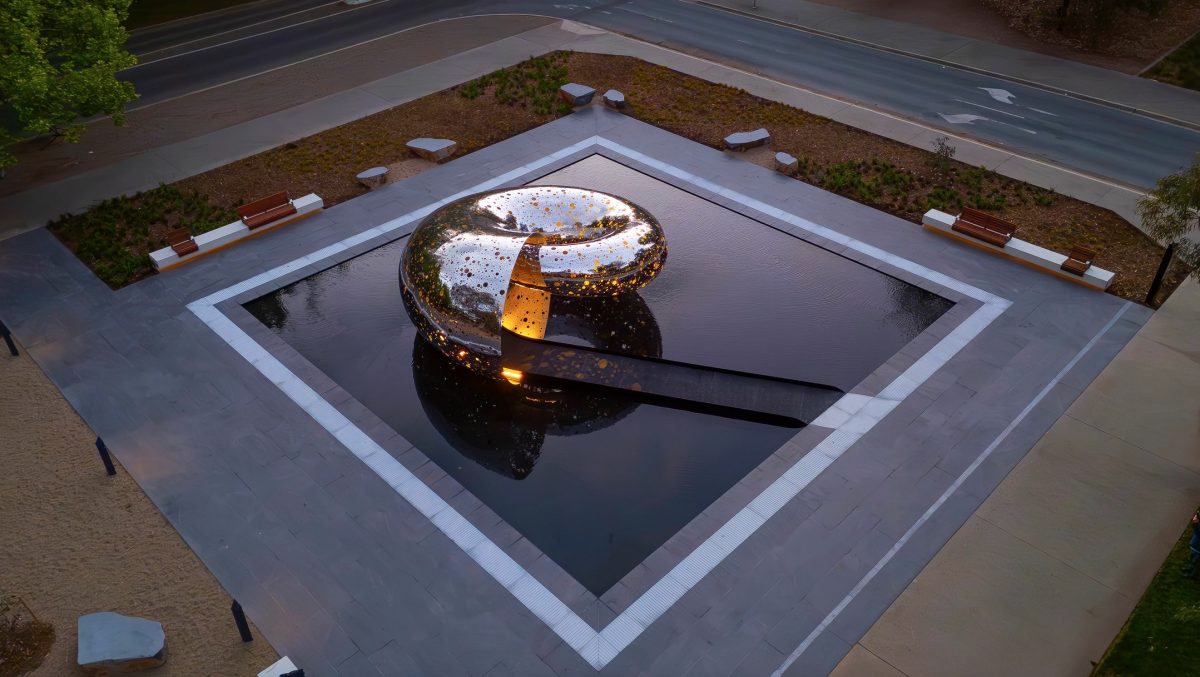
Lindy Lee, Ouroboros, 2021-24 installation view, National Gallery of Australia, Kamberri/Canberra, 2024, commissioned for the National Gallery’s 40th anniversary, 2022 © Lindy Lee. Photo: NGA.
The name Ouroboros (two Greek words ‘tail’ and ‘eating’) refers to an ancient concept of the serpent devouring its own tail – a reference to the idea of regeneration with the eternal cycle of destruction and rebirth. It is common to many ancient and modern religions.
Canadian singer songwriter, Leonard Cohen, who for many years was a Zen monk, writes in one of his enigmatic lyrics: “And when we fell together all our flesh was like a veil/That I had to draw aside to see/The serpent eat its tail.”
Lindy Lee, who taps into her Chinese ancestry embracing Taoism and Ch’an (Zen) Buddhism, views humanity and nature as one and the allegory of the Ouroboros as something that taps into a profound mystery that cannot be understood on a verbal level of understanding. However, it can be experienced in the moment and in the flesh.
There is something evocative in the word Ouroboros, but also something unknowable. There is an ancient superstition: one must avoid evoking the Ouroboros because you could evoke the curse of the Ouroboros. This is when the serpent will return to Earth and try to consume the world that he once sought to control.
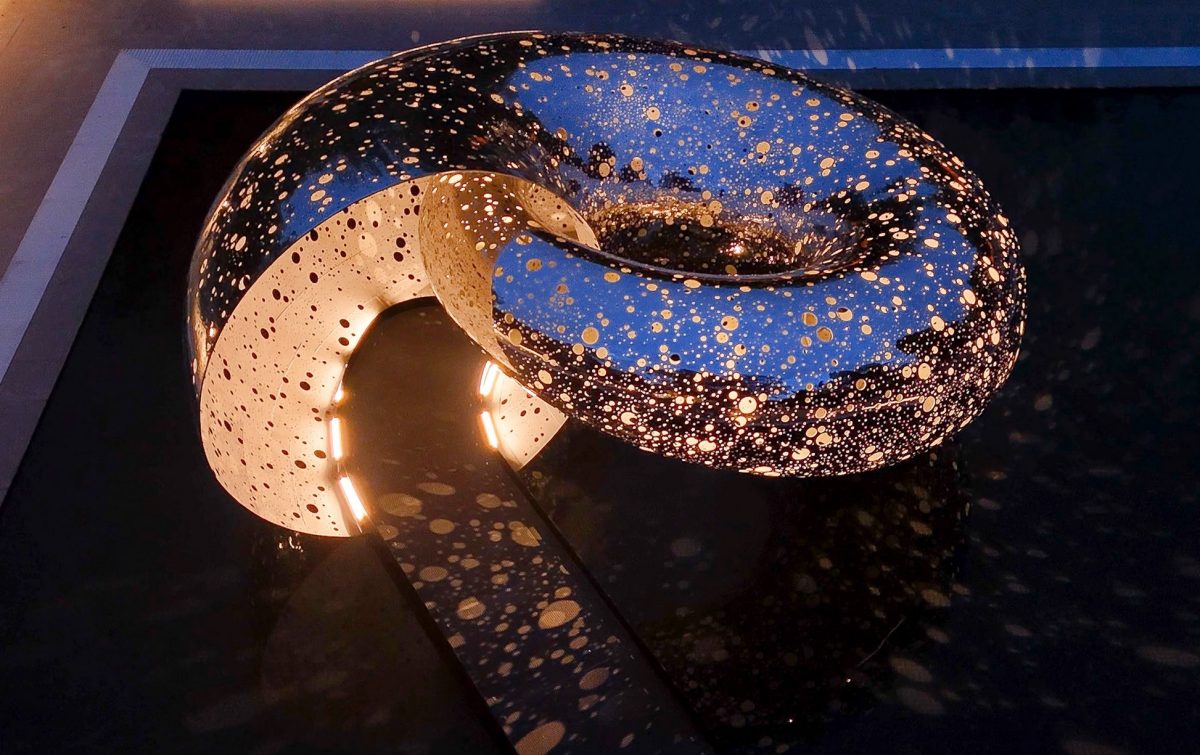
Lindy Lee, Ouroboros, 2021-24 installation view, National Gallery of Australia, Kamberri/Canberra, 2024, commissioned for the National Gallery’s 40th anniversary, 2022, photo by Martin Ollman © Lindy Lee. Photo: NGA.
Lindy Lee’s Ouroboros will be a controversial work – most major commissions and acquisitions at the National Gallery in Canberra have been controversial. I suspect with time, it will join James Turrell’s Within without Skyspace in the gallery’s gardens as one of Canberra’s major attractions.
Original Article published by Sasha Grishin on Riotact.


